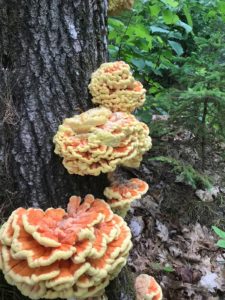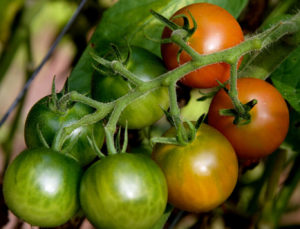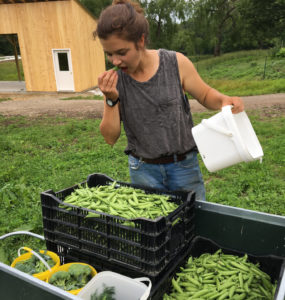Have you ever had a Meyer lemon? They are a favorite thing, A Meyer Lemon is a perfect cross between a lemon and a mandarin orange. They are smaller than a lemon and have the benefit of a thinner skin. They were brought to the U.S. from China in 1908 by Frank Meyer, an agricultural explorer – what a fascinating job!
Why do I love them? March in Maine can be challenging to the spirit. Here at Chewonki, semester students start to wear shorts and forgo their jackets, and we of longer tooth shake our heads and think, ‘just wait.” This is when Meyer Lemons begin to show up at the supermarket, just in time to inject a little springtime citrus freshness into a menu. This week at home, I cut some up and added them to a vegetable curry, skin and all. The thin skins make them deliciously tender when cooked, and they added a special sweet and tangy element to my curry. They also make the very best lemon curd, a curious flavor where an ordinary lemon might usually be, or a garnish for a special plate.
Meyer Lemon Marmalade, Sunshine in a Jar
- 2 ½ pounds of Meyer Lemons
- 7 cups of water
- 6 ½ cups sugar
Day one: Wash the lemons and chill them for at least an hour. It is much easier to slice cold lemons. Cut the lemons in half lengthwise, then cut a notch to remove the inner pith. Then run your fingers along the inside to remove the seeds to a bowl. You’ll get some juice too. Save the juice and pits.
Skin side up, slice the lemons into thin strips, crosswise, and put the slices into a bowl with the 7 cups of water. Sort the seeds out of the juice and put them aside, then pour the juice in with the slices. Gather the seeds into either a stainless tea ball or make a cheesecloth bundle, and submerge the seeds into the water and lemon slices. Cover and refrigerate overnight. (Taking the time to soak the seeds overnight adds natural pectin and can mean that you will need to boil for less time, giving a better texture to the marmalade.)
Day two: Sterilize your jars. Put 5 teaspoons on a plate and put them into your freezer.
Put the lemons and the seeds into a non reactive pot, such as enamel coated cast iron, glass or stainless steel. Simmer the lemons until the peels are tender. Add the sugar and stir until it is dissolved. Then turn the heat up and boil until the mixture reaches the jelly stage. Be patient as this can take up to 30 minutes. Resist the urge to stir as this lowers the temperature, and your goal is to keep the boil steady for about 20 minutes, then stir to keep from sticking and test for 220 degrees on a candy thermometer. If you don’t have a candy thermometer you will notice a change in texture when it is ready, and you can test for this using those spoons that you froze: dip a spoon in and if the marmalade is ready it will hang onto the spoon and not drip. Remove the seeds and ladle the hot mixture into your prepared jars. Cover and process in your canning pot. Cool completely.
Phew, what a process! If you want to try Meyer Lemons and don’t have marmalade determination, here’s an idea for a quick lemon chicken:
Meyer Lemon Chicken
Rub some nice chicken breasts with good olive oil. Salt and pepper them and put them into a shallow baking dish that has also been lightly oiled. Slice enough Meyer lemons so that you can layer them, overlapping, on top of each check breast. Drizzle a tiny bit more good olive oil and top of the lemons and pop them into a 375 degree oven and roast for about 25 minutes or until the internal temperature is 165. Serve these with perhaps a leafy salad and some basmati rice. I eat the lemons, tender skin and all. Enjoy!











